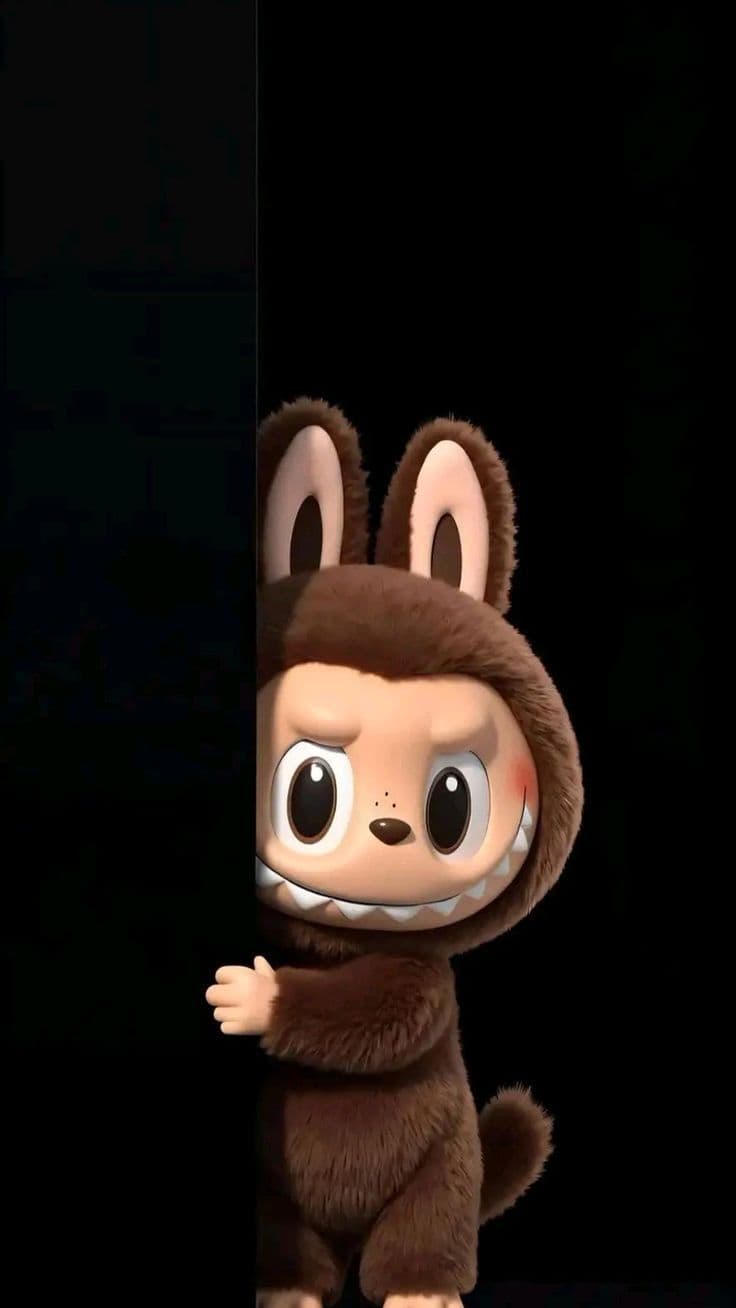The Labubu Phenomenon: How a Mischievous Monster Conquered the Global Collectibles Market

Introduction: The Goblin That Stole the World’s Attention
In the crowded landscape of modern collectibles—from Beanie Babies to Funko Pops—a pointy-eared, nine-toothed creature named Labubu has emerged as the undisputed icon of 2025. With celebrities like Rihanna and Blackpink’s Lisa showcasing these dolls clipped to their Louis Vuitton and Hermès bags, and reports of fights breaking out in stores over limited editions, Labubu has transcended toy status to become a cultural litmus test. But what fuels the obsession with this "cute-ugly" gremlin? This deep dive explores its origins, design genius, business alchemy, and the psychological grip it holds over millions
Part 1: Origins – From Sketchbook to Global Sensation
The Birth of a Mischief-Maker
Labubu was born in 2015 in the imagination of Hong Kong artist Kasing Lung. Drawing inspiration from Nordic folklore encountered during his childhood in the Netherlands, Lung envisioned "The Monsters"—a universe of forest imps and elves. Labubu, whose name intentionally means nothing, embodied playful chaos: a kind-hearted yet clumsy creature whose attempts to help often backfired. Early designs featured signature traits: oversized eyes, pointed ears, and a grin revealing exactly nine jagged teeth—a deliberate fusion of innocence and subversion.
Pop Mart’s Blind-Box Revolution
Initially a niche art toy, Labubu’s fate changed when Chinese retail giant Pop Mart acquired licensing rights in 2019. Pop Mart had already pioneered the blind-box model with earlier characters like Molly (a minimalist big-eyed girl). Each sealed box—priced at $15–$30—contained a random Labubu variant, turning purchasing into a high-stakes game. For collectors, the thrill lay in the gamble: common figures were easy to find, but "chaser" editions had odds as low as 1 in 72 boxes. As one collector confessed, "It’s like a lottery ticket with plush fur"
Part 2: Anatomy of an Obsession – Design, Psychology, and Culture
The "Cute-Ugly" Aesthetic Explained
Labubu’s genius lies in its cognitive dissonance. Designer Kasing Lung masterfully blended elements that trigger opposing responses:
- Infantile cues: Large eyes and a small body activate nurturing instincts.
- Unsettling details: Sharp teeth and mischievous grins evoke playful danger.
The Blind-Box Brain Hack
Pop Mart leveraged behavioral psychology to addictive effect:
- Variable rewards: Unpredictable outcomes mirror slot machines, releasing dopamine with each unboxing.
- Social trading: Duplicates fostered communities where collectors swap figures, amplifying reach.
- Scaled rarity: "Secret" editions (e.g., the freckled "Rare Special") drove compulsive buying—some spent $2,000+ chasing one doll.
Why Adult Women Drive the Craze
Per industry data, 80% of Labubu collectors are women aged 20–40. For them, Labubu represents:
- Nostalgic escapism: Reclaiming childhood joy amid adult stress.
- Subtle status signaling: Affixing Labubu to luxury bags (e.g., Birkin) "softens" elitism with whimsy.
- Community building: Physical stores like Pop Mart’s Soho location become social hubs. As collector Michelle Keller shared:
Part 3: The Business Machine – How Pop Mart Won the World
From Pound Shop to $1.8 Billion Empire
Pop Mart’s journey mirrors Labubu’s meteoric rise:
- Founded in 2010 as a Beijing bargain store.
- Pivoted to blind boxes in 2016 with Molly dolls.
- Listed on Hong Kong Stock Exchange (2020); shares surged 500% by 2025.
- Labubu alone generated $870 million in 2024—nearly half of Pop Mart’s revenue. 16
Table: Pop Mart’s Character Evolution
CharacterDesignerDebutAestheticTarget AudienceMollyKenny Wong2016Minimalist, pastelElegance seekersPuckyPucky2017Fairy-tale whimsyFantasy loversLabubuKasing Lung2015/2019Edgy, colorfulAdventure collectors
Global Domination Tactics
- Roboshops: 2,000+ vending machines in airports/malls worldwide enabled impulse buys.
- Celebrity seeding: Gifting dolls to influencers (e.g., Lisa’s 2024 Instagram post sparked a 400% price surge).
- Scarcity engineering: "Drops" sold out in seconds, fueling resale markets (e.g., a "Starry Knight" Labubu auctioned for $170,000)
Part 4: Cultural Impact – More Than a Toy
The "Soft Power" Paradox
Labubu became an unlikely diplomat for Chinese creativity. State media Xinhua hailed it as proof of "China’s cultural IP going global," alongside Black Myth: Wukong. Remarkably, its origin transcended geopolitical tensions:
"Pop Mart, BYD, DeepSeek—they’re so good no one cares they’re Chinese. You can’t ignore them." — Chris Pereira, iMpact Consultancy
Fashion’s Unlikely Muse
Luxury brands embraced Labubu’s "anti-perfection":
- Miu Miu featured plush charms in SS/2024 collections.
- Designer collaborations: Rumored partnerships with Gucci/Loewe.
- Customization boom: Artists paint Labubus onto Goyard/Louis Vuitton bags ($2,000+ commissions).
The Dark Side: Frenzy and Fakes
Demand bred chaos:
- UK stores halted sales after crowds camped overnight and fights erupted.
- Counterfeit rings sold 70,000+ fake dolls seized by Chinese customs.
- Collectors hid rare dolls for fear of theft.
Part 5: The Future – Evolution or Overexposure?
Beyond the Blind Box
Pop Mart is innovating to sustain hype:
- NFT integration: Digital collectibles linked to physical dolls.
- Animation series: In development to expand "The Monsters" lore.
- Material experiments: Mixed vinyl/plush designs for tactile appeal
Conclusion: The Monster in the Mirror
Labubu’s ascent from Hong Kong sketch to global emblem is more than a marketing triumph; it’s a Rorschach test for modern anxieties. In a world of curated perfection, its jagged teeth celebrate chaotic authenticity. For collectors, it channels childhood wonder through adult rituals—unboxing, trading, displaying. And as luxury brands chase its irreverent spirit, Labubu proves that vulnerability (even plastic fangs) can be power. Whether it becomes a lasting icon or a time-stamped craze, this goblin has already rewritten the rules of desire.